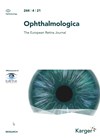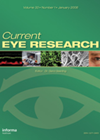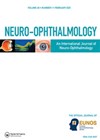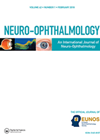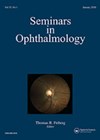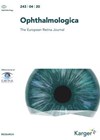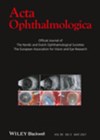
Journal Reviews
Post hoc analysis of the CANTREAT randomised trial
CANTREAT, a Canadian multicentre two-year randomised trial compares treat and extend treatment (T&E) relative to the monthly administration of Ranibizumab in nAMD. Two-hundred and eighty-five treatment-naïve patients with nAMD were randomised to receive either a once-monthly dosing or T&E regimen...
Brolucizumab in age-related macular degeneration, HAWK Study
The aim of the study was to collect additional data on efficacy and safety of brolucizumab 6mg intended for commercialization in age-related macular degeneration (AMD) (with an increase in pH and decrease in polysorbate concentration). The HAWK Study was a...
Association between neurodegeneration and macular perfusion in the progression of diabetic retinopathy
In this prospective three-year longitudinal study, the authors aimed to explore the relation between retinal neurodegenerative changes and vessel closure (VC) in individuals with non-proliferative diabetic retinopathy (NPDR). The participants included 74 individuals with type 2 diabetes, NPDR, and Early...
Sub-clinical detection methods in multiple sclerosis
Visually symptomatic multiple sclerosis (MS) provides only part of the required information to assist in understanding the disease. Recently, researchers have concentrated their efforts on diagnosing MS cases in the subclinical period. The aim of this paper was to assess...
Transient thickening of the macular retinal nerve fibre layer in acute optic neuritis
Acute optic neuritis (ON) causes axonal degeneration, which can be quantified from the blood by neurofilament protein (Nf) levels. Within about three months, atrophy of the retinal nerve fibre layer (RNFL) follows. However, it remains challenging to explain why there...
Progression of macular atrophy on long-term anti-VEGF therapy for AMD
This retrospective study evaluated the progression of macular atrophy in 53 eyes of 53 patients receiving AntiVEGF Therapy for age-related macular degeneration (nAMD), for at least six years. None of the patients had any macular atrophy (MA) at presentation. MA...
Detecting apoptosis in retinal cells
This is a review paper in which the authors summarise the transitioning of techniques detecting apoptosis from bench to bedside, along with the future possibilities they encase. Detection of Apoptosis in Retinal Cells (DARC) technology can be used as a...
The effects of anti-VEGF therapy for NvAMD on retinal vasculature
This retrospective consecutive case series examined 54 eyes of 54 treatment-naïve neovascular age-related macular degeneration (N-AMD) patients. Thirty-three eyes received intravitreal aflibercept injections, and 21 eyes received intravitreal ranibizumab injections with unaffected fellow eyes (54 eyes) as controls. All image...
OCTA in geographic atrophy
In this article the authors aim to give an overview of the current literature concerning the application of OCT-A in geographic atrophy (GA). GA is a disease characterised by loss of outer retinal layers including photoreceptors, degeneration of the retinal...
Wet AMD outcomes post cataract surgery
The authors present the findings of a retrospective study looking at the progression of wet age-related macular degeneration (AMD) in patients who underwent cataract surgery. They recruited a series of 111 patients of which 38 were men and 73 were...
Characteristics of Charles Bonnet syndrome in patients with neovascular AMD
This retrospective cross-sectional study aimed to characterise various aspects of Charles Bonnet syndrome hallucinations among patients with neovascular age-related macular degeneration (AMD). Five hundred and ten consecutive patients were asked a screening question to determine if they had ever suffered...
Changes in drusen and retinal layer volumes prior to CNV development
This retrospective longitudinal study looked at patients with wet age-related macular degeneration (AMD) in one eye who subsequently developed wet AMD in the fellow eye. The aim was to discover whether drusen characteristics or volumes of retinal layers correlate with...

